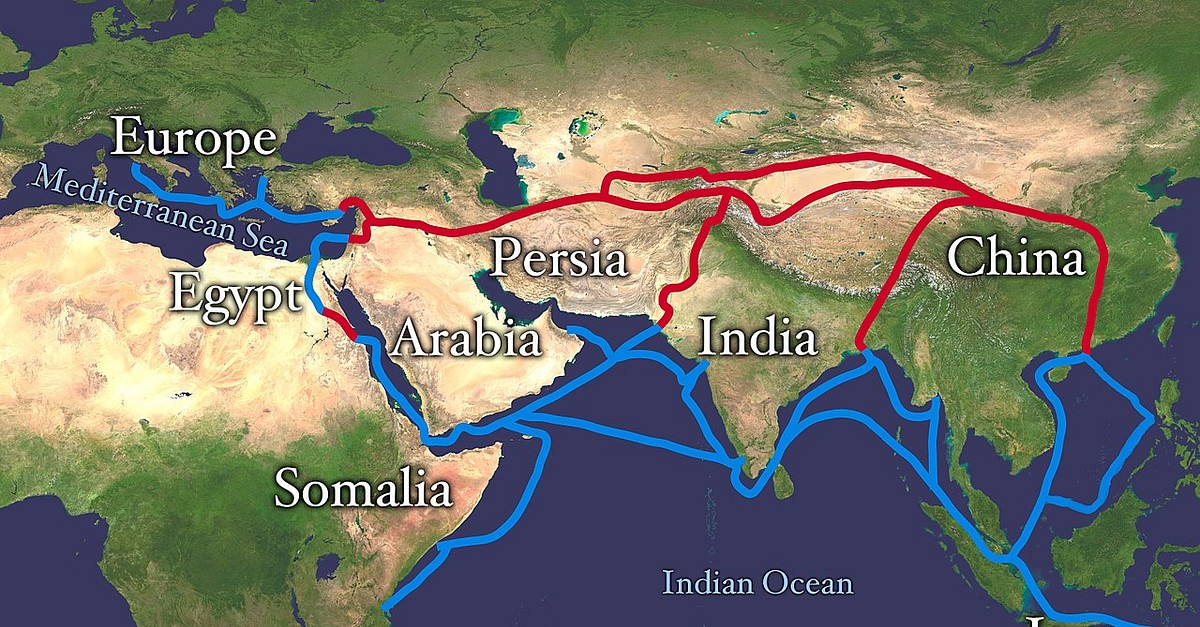Anceint Fibers, New Uses
Silkworm cocoons (credit: Wikipedia)
From tiny worms a wondrous fiber is produced, natural silk.
Once considered a luxury fabric treasured by the ancient Greeks and Romans, the cloth gave the name for Silk Road allowing a 4000 mile trading route from China across Central Asia to the Mediterranean and onward into Europe. How silk was actually produced remained a closely guarded secret that the Chinese controlled along with the fiber's production process.

Silk Road map (credit: WorldHistory.org)
Eventually, the secret got out that silk was obtained from growing the larvae of certain moths on mulberry trees. The silk threads produced by the worms were spun from their cocoons.
Silk now serves as the basis for myriad new products with important medical uses. Novel bio-technological applications are being created but they still depend on the tiny worms to produce the super-thin fiber as the starting material. Recent advances in producing spider silk by cloning the genes in bacteria and growing the fibers in a laboratory have been developed. Expect that silk to cost a 'kings ransom' for a scarf. WHB